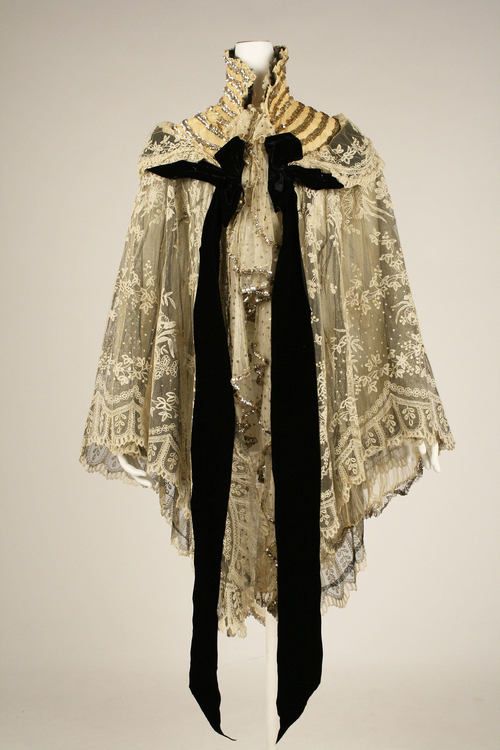
Last year I wrote about the history of the cape and how it has come and gone through fashion history. I noticed that during the Victorian era, one’s opera cape held great significance and that they were grand sights to behold. A post about Victorian and Edwardian opera attire has been on my mind ever since. I was fortunate to uncover some very specific and thorough guidelines in some Victorian etiquette manuals about what to wear to the opera. While dated in their view of women’s role in public life, they paint a pretty picture of what a feast for the eyes a night at the opera was in Victorian times.
Selectively choose your gown
Victorian etiquette and style guides often mention that when attending the opera a woman should be very careful to wear a beautiful gown of sturdy fabric. Apparently, the fear of one’s delicate dress being “crushed” by either crowds or sitting was a serious one.
The Art of Dressing Well, written in 1870 by S.A. Frost reads:
“Thin dresses, although often worn, must be crushed in an opera house, and are not so suitable as silks of light color, appropriately trimmed, and with soft lace round the shoulders and arms.”
And just as important was the color of one’s opera dress. The detail the authors of the guides put into this fact astonished me. Even more astonishing is that the dress experts expected women to adorn themselves as accessories or trimmings of the opera house itself. Have you ever coordinated your outfit with the color of the theater you were going to?
Reads 1917’s Woman as Decoration:
“To produce an effect in an opera box is to understand the carrying power of colour and line. The woman in the opera box has the same problem to solve as the woman on the stage: her costume must be effective at a distance. Such a costume may be white, black, and any colour; gold, silver, steel or jet; lace, chiffon–what you will–provided the fact be kept in mind that your outline be striking and the colour an agreeable contrast against the lining of the box.”
Are you sure that’s the right color?
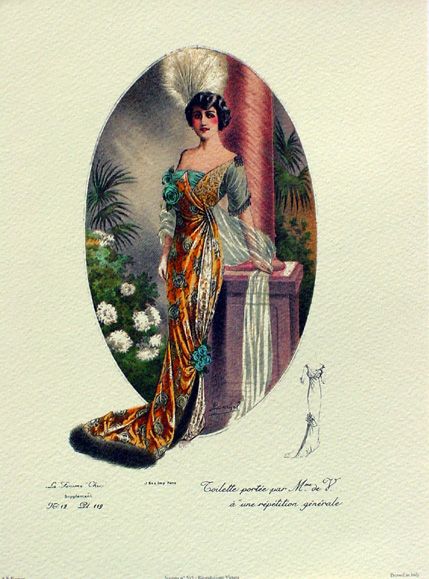
As for color, here are the things that S.A. Frost recommends for each:
Rosey pink: avoid due to the risk of sitting next to someone with a scarlet cloak and having the effect spoiled.
Blue: avoid due to the rick of sitting next to someone wearing a deeper shade of the same colo and looking “faded and dull.”
Gold: wearing only as trimming on a headdress or cloak.
Orange: the only color “of the yellow tinge” that is appropriate for the opera, but is “difficult to manage.”
Green: while also difficult to manage, may be worn with gold.
Purple: suburb for the middle-aged lady and “will bear ornaments of gold, and diamonds have a regal richness with purple velvet.”
Neutral tints: “difficult to manage in all evening dresses, and require strong points of coor to make them becoming, yet, when happily chosen, well relieved, and worn with white or black lace, they are very elegant and stylish in appearance.”
Pink: a great opera color, but only when contrasted with black or white.

The opera cloak
“It is certainly a great addition to the beauty of an audience to have the ladies in full-dress, and the opera cloak is often an addition of much elegance, making a stylish finish to the toilet.”
-The Art of Dressing Well
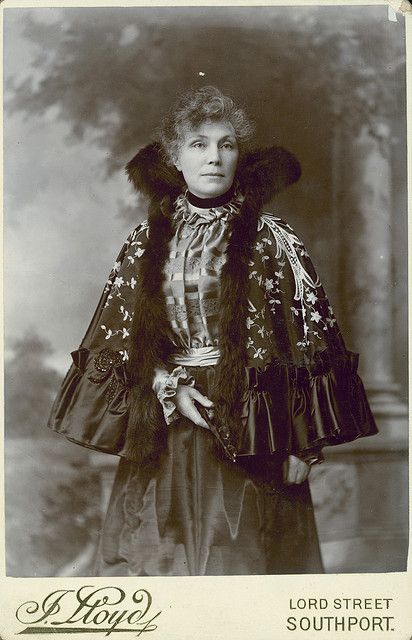
The opera cloak was an elegant garment meant for an elegant occasion. While men’s opera cloaks were long and fairly simple (but of the highest quality fabrics,), women’s opera cloaks were meant to be elaborate. The standard style was an embroidered or adorned cloak of satin, hanging between the hips and waist, and sometimes with a high neckline, a ruffle surrounding the face.
“The opera cloak is generally of white, either richly embroidered or trimmed, but colors are also worn, but must be managed carefully, to avoid a discordant contrast with other portions of the dress. The Roman stripe is very rich effect when worn with a black velvet or lace dress, or with a dress of pure white, but it deadens the effect of neutral tints, and harmonizes but seldom with any bright color.
White ermine capes are often worn as opera cloaks, and are very rich in effect; they will bear a lining or colored silk, but are stylish lined with white satin, and finished with heavy white cord and tassels.”
-The Art of Dressing Well
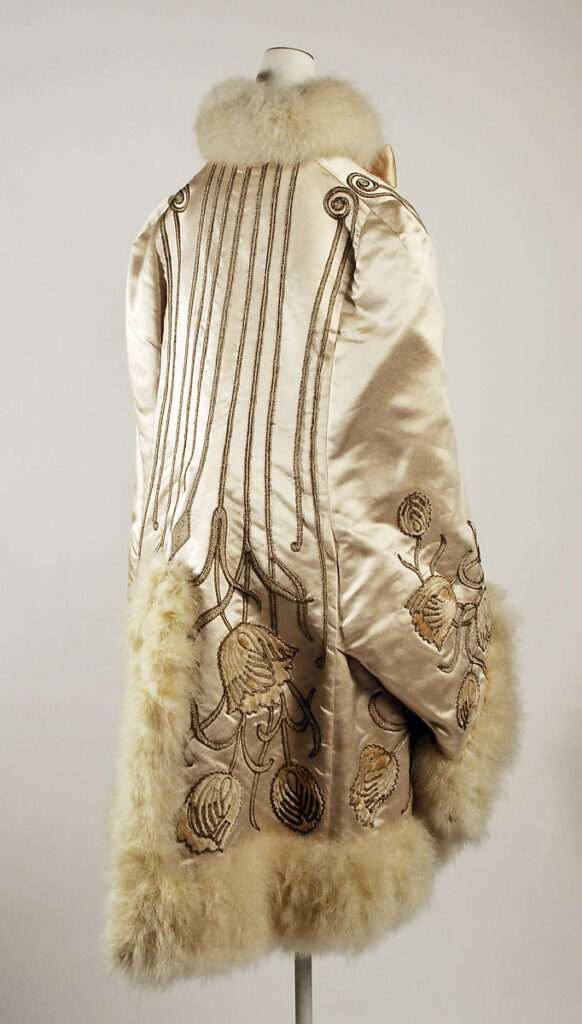
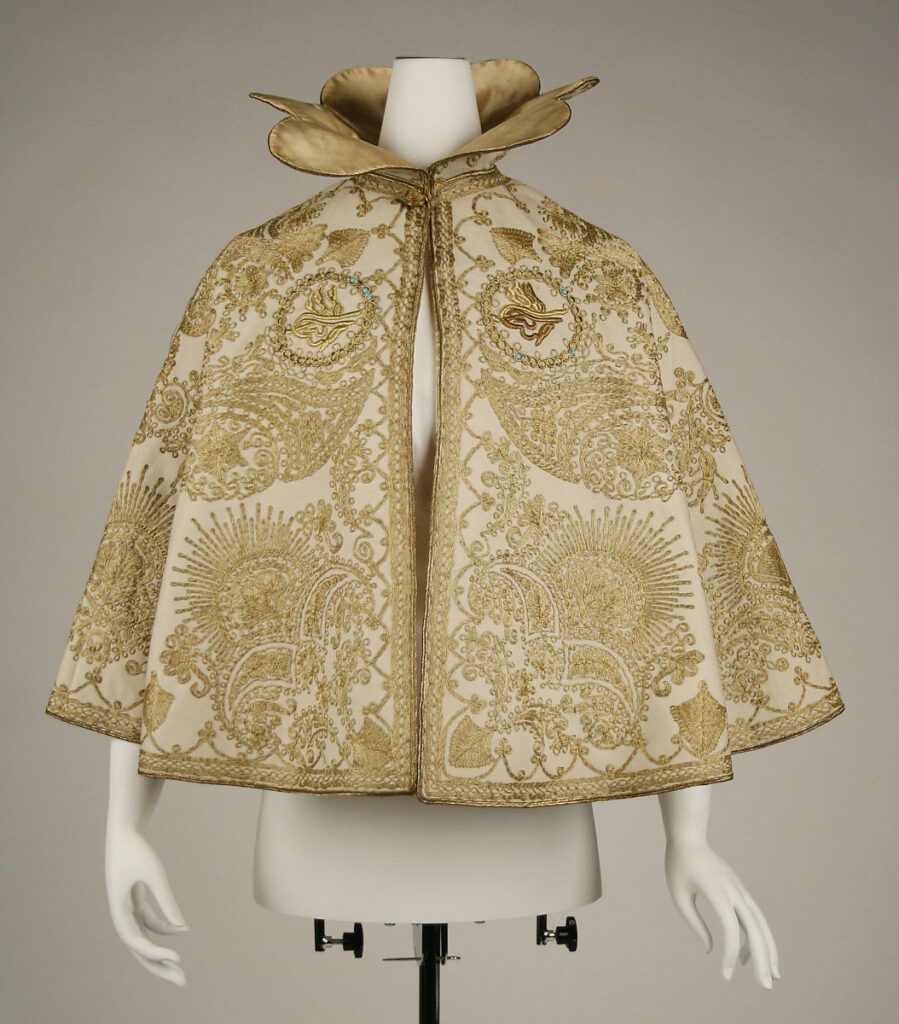
An opera bonnet
I love to discover different types of bonnets worn in the past. I thought I had covered the main trends through time when I wrote a post on the topic a few months back, but alas, “opera bonnet,” or “opera hood” was left out.
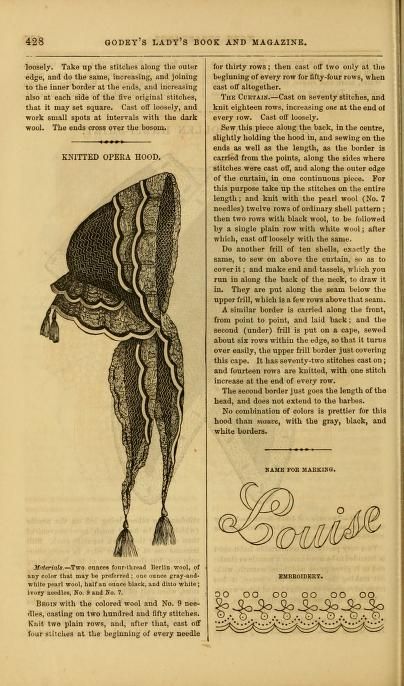
Wearing hats indoors was generally seen as a no-no during Victorian and Edwardian times, with some specific exceptions. For the most part, women would have left the hat at home to attend the opera and instead focused on lovely hair accessories. However, given the expansiveness of the opera house and the number of spectators, some women felt too exposed to leave their head uncovered. This is where the lovely opera hood would come in.
“If the fair spectator is afraid of having uncovered, it is more elegant to wear an opera bonnet. This is a very light, dressy affair, generally of lace or crape, with exquisite flowers for trimming, but if a more substantial bonnet is required, white velvet, cut or uncut, with velvet flowers, or light feathers, forms an appropriate substitute.”
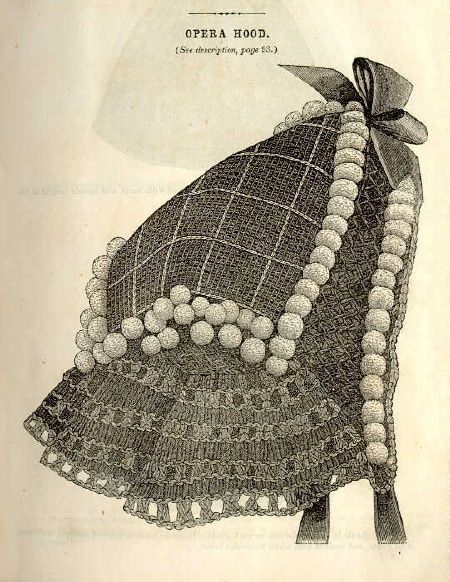
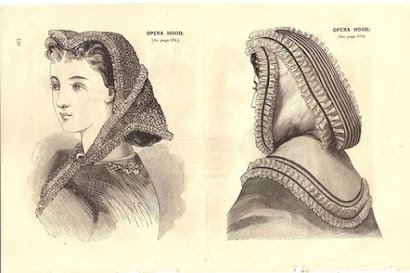
Don’t forget to sparkle
A night at the Victorian or Edwardian opera would have been an optical joy. Women were encouraged to dress more elaborately than they would for dinners, theater, or balls and meant to be a part of the overall sensory experience. All accessories were permitted, the grander, the better.
From The Art of Dressing Well:
“The hair should be dressed as for a large evening party, and artificial flowers, jewels, feathers, ribbons, or any style of head-dress peculiar to the fashion may be worn.”
“Jewelry must be worn according to the dress, but more is allowable than on most occasions, and the glittering gems are very effective in the brilliant light of a superb opera house.”
I love to imagine the effect of women wearing gowns matching their opera boxes, sitting with sparkling diamonds and jewels in their hair. It must have been an experience to remember.
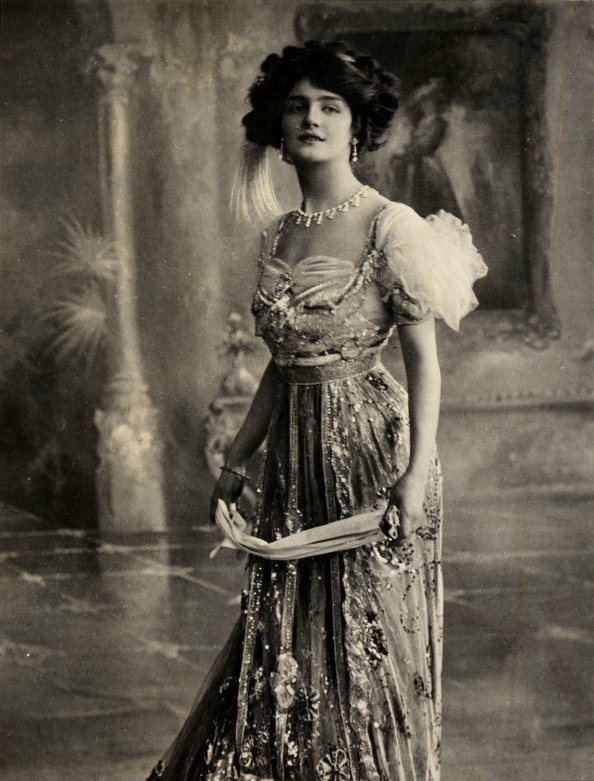
Part of the display
While the night was one I am sure many enjoyed, I was surprised to see how seriously women were meant to take their role of adding beauty to the opera experience.
“Well-dressed as well as handsome ladies are looked for in the audience of an opera, and it is out of harmony with the scene and surroundings to see sombre draperies, heavy bonnets, and dull faces. Ladies are supposed to be seen, as well as to see, and are often the most beautiful part of the display. They should not spoil the beauty of the auditorium by wrapping themselves in cloaks or shawls.” -The Art of Dressing Well
My, how times have changed!
More fashion history fun:
Want a Regency-inspired fall? Try a Spencer jacket.

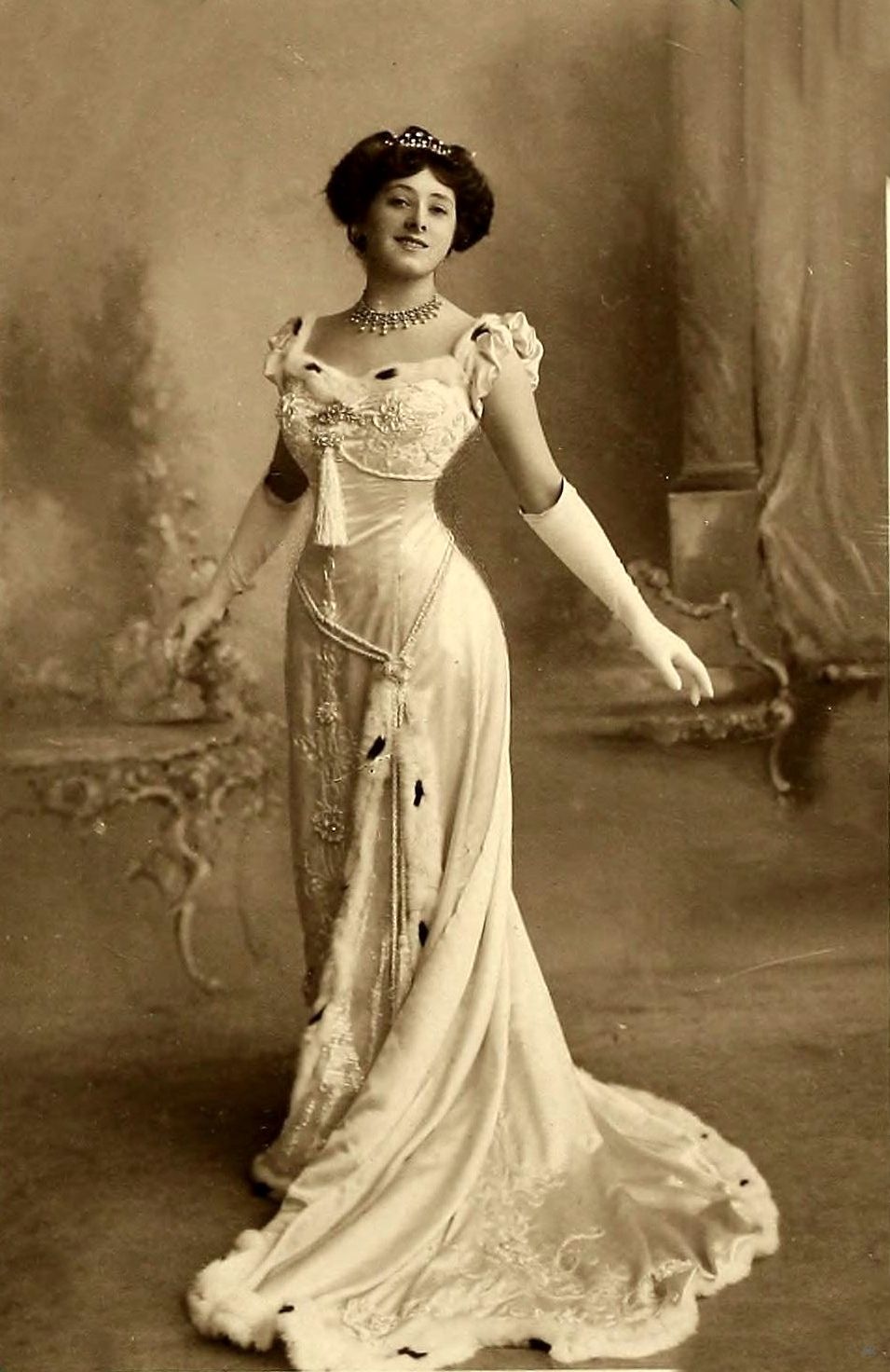












I love the Articles! As someone who does historical costuming- I would love it of you gave dates with your pictures. I find it helps me understand and background of the photos. I love the variety of the outfits you have included with the articles I’ve read. Thanks for your assortment of information.
Martha
Enjoyed your article about the opera attire. Very interesting.